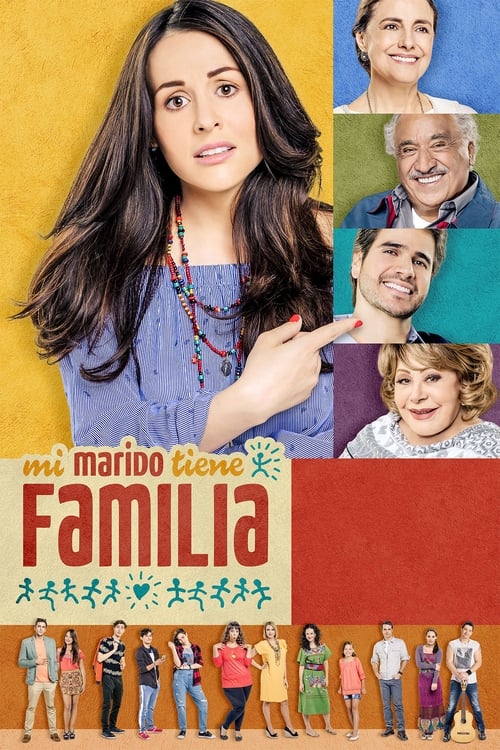
Ask Your Own Question
What is the plot?
In the small town of Santa Teresa, a group of misfits and outcasts, known as "Bichos Raros," navigate their lives filled with peculiarities and challenges. The story begins with the introduction of the main character, a young girl named Lila, who feels out of place in her conservative community. Lila has a vivid imagination and often escapes into her own world, where she befriends fantastical creatures that represent her inner struggles.
One day, while exploring the woods near her home, Lila discovers a hidden cave. Inside, she finds a mysterious glowing crystal that seems to resonate with her emotions. As she touches it, she experiences a surge of energy, and the cave begins to transform, revealing a portal to another dimension. This moment marks the beginning of her journey into the world of the Bichos Raros.
Lila's first encounter in this new dimension is with a quirky creature named Tico, who is a mix between a rabbit and a bird. Tico is playful and carefree, embodying the spirit of adventure. He explains to Lila that the crystal she found is a source of power that can help her and others like her embrace their uniqueness. Tico encourages Lila to explore this new world, where she meets other Bichos Raros, each with their own distinct traits and stories.
As Lila spends more time in this dimension, she learns about the struggles of her new friends. There's a shy boy named Leo, who can turn invisible but struggles with self-acceptance. A girl named Mia has the ability to communicate with animals but feels isolated because of her gift. Lila becomes determined to help her friends embrace their differences and find their place in the world.
The plot thickens when a dark force, known as the Shadow, begins to threaten the Bichos Raros' existence. The Shadow feeds on negativity and fear, growing stronger as the characters doubt themselves. Lila realizes that the crystal can be used to combat this darkness, but it requires the collective strength and belief of all the Bichos Raros to harness its power.
In a pivotal scene, Lila gathers her friends and encourages them to confront their fears. They each share their insecurities, and through this vulnerability, they begin to form a bond. Tico leads them in a ritual to channel their energy into the crystal. As they do so, the cave begins to shake, and the Shadow appears, trying to disrupt their connection.
A confrontation ensues as the Bichos Raros stand together against the Shadow. Lila, filled with determination, steps forward and uses the crystal to project a beam of light towards the Shadow. The light represents their collective acceptance of themselves and each other. The Shadow, overwhelmed by the positivity, begins to dissipate, but not without a final attempt to drag Lila into darkness.
In a moment of bravery, Lila reaches out to the Shadow, expressing compassion instead of fear. This act of kindness weakens the Shadow, allowing it to transform into a smaller, less threatening form. The Bichos Raros celebrate their victory, realizing that they have the power to change their narrative by embracing their uniqueness.
As the story progresses, Lila and her friends return to their town, where they face the challenge of integrating their experiences from the other dimension into their everyday lives. They encounter skepticism and resistance from the townspeople, but Lila's newfound confidence inspires her friends to stand up for themselves.
In the climax, Lila organizes a community event to showcase the talents and stories of the Bichos Raros. The event is met with mixed reactions, but as the characters share their experiences, the townspeople begin to see the beauty in their differences. The atmosphere shifts from one of judgment to acceptance, and the community starts to embrace the Bichos Raros.
The series concludes with Lila standing in front of the cave, reflecting on her journey. She understands that the power of the crystal lies not just in its magic, but in the connections she has formed with her friends and the acceptance of her own identity. The final scene shows Lila and her friends laughing together, symbolizing their triumph over adversity and the celebration of their uniqueness.
What is the ending?
In the ending of "Bichos Raros," the main characters confront their fears and insecurities, leading to a resolution of their personal conflicts. The story culminates in a series of emotional revelations and reconciliations, ultimately allowing the characters to embrace their true selves and find a sense of belonging.
As the final episodes unfold, we see the characters navigating their intertwined lives. The tension builds as they face the consequences of their choices. Each character's journey reaches a critical point, forcing them to confront their pasts and the relationships that have shaped them.
In the first scene of the finale, we find the protagonist, a young man named Tato, standing at a crossroads in his life. He is filled with uncertainty about his future and the relationships he has built. The camera captures the weight of his emotions, showcasing his internal struggle as he reflects on the friendships that have both uplifted and burdened him.
Next, we shift to Tato's best friend, a quirky and imaginative girl named Lila. She is in her room, surrounded by sketches and art supplies, grappling with her identity as an artist. Lila's vibrant personality contrasts with her feelings of inadequacy, and we see her wrestling with the fear of not being accepted for who she truly is. The scene is filled with bright colors, symbolizing her creativity, but the shadows in her expression reveal her inner turmoil.
As the narrative progresses, the characters come together for a pivotal gathering. The atmosphere is charged with anticipation and anxiety. Tato and Lila, along with their group of friends, engage in heartfelt conversations that reveal their vulnerabilities. Each character shares their fears and dreams, leading to moments of catharsis. The dialogue is raw and honest, showcasing the depth of their relationships and the importance of support in overcoming personal struggles.
In a climactic moment, Tato stands up and addresses the group, expressing his desire to embrace his true self, despite the fear of judgment. His speech resonates with the others, prompting them to share their own truths. The scene is filled with emotional intensity, as tears are shed and laughter erupts, symbolizing the healing power of friendship.
As the finale draws to a close, we see the characters taking steps toward their individual goals. Tato decides to pursue his passion for music, while Lila gains the confidence to showcase her artwork publicly. The camera captures their determination, highlighting their growth and newfound sense of purpose.
In the final moments, the group gathers for a celebration, surrounded by friends and family. The atmosphere is joyful, filled with laughter and music. Tato and Lila share a meaningful glance, acknowledging the journey they have taken together. The screen fades to black, leaving the audience with a sense of hope and the understanding that embracing one's true self is a powerful and transformative experience.
In summary, the ending of "Bichos Raros" encapsulates the characters' journeys of self-discovery and acceptance, emphasizing the importance of friendship and the courage to be authentic. Each character finds their path, leading to a resolution that is both satisfying and uplifting.
Is there a post-credit scene?
In the 2018 series "Bichos Raros," there is indeed a post-credit scene that adds an intriguing layer to the narrative. After the final episode concludes, the screen fades to black, and a few moments later, it cuts to a dimly lit room filled with various oddities and curiosities, reflecting the show's theme of the unusual and the bizarre.
In this scene, we see one of the main characters, a quirky and eccentric scientist named Dr. Lúcio, meticulously examining a peculiar specimen under a microscope. His brow is furrowed in concentration, and there's a palpable sense of excitement in the air. The camera zooms in on the specimen, revealing it to be a small, glowing creature that pulsates with vibrant colors, hinting at its otherworldly nature.
As Dr. Lúcio jots down notes, he suddenly pauses, a look of realization dawning on his face. He mutters to himself about the potential implications of this discovery, his voice filled with a mix of wonder and trepidation. The scene captures his internal conflict--his passion for discovery battling against the ethical dilemmas that come with it.
The post-credit scene concludes with a close-up of the glowing creature, which suddenly flickers and emits a high-pitched sound, causing Dr. Lúcio to jump back in surprise. The screen then cuts to black, leaving viewers with a sense of mystery and anticipation about what this discovery could mean for the characters and the world they inhabit. This moment encapsulates the show's themes of curiosity, the unknown, and the consequences of scientific exploration, inviting the audience to ponder the possibilities that lie ahead.
What are the main character's motivations throughout the series?
The main character, a young girl named Tati, is driven by her desire to find her place in a world that often feels alien to her. She struggles with feelings of isolation and seeks connection with others who share her experiences. Her journey is marked by a quest for acceptance and understanding, which leads her to confront her own fears and insecurities.
How does Tati's relationship with her family evolve during the series?
Tati's relationship with her family is complex and evolves significantly throughout the series. Initially, she feels misunderstood by her parents, who are preoccupied with their own issues. As the story progresses, Tati's experiences with her friends and the challenges she faces help her communicate her feelings more openly, leading to moments of reconciliation and deeper understanding between her and her family.
What role do the 'bichos raros' play in Tati's journey?
The 'bichos raros,' or 'strange bugs,' serve as both literal and metaphorical elements in Tati's journey. They represent the uniqueness and diversity of individuals, mirroring Tati's own feelings of being different. Throughout the series, her interactions with these creatures help her embrace her individuality and learn to appreciate the quirks of others, ultimately aiding her in forming meaningful connections.
How does Tati's friendship with her peers impact her character development?
Tati's friendships with her peers are pivotal to her character development. Initially, she feels like an outsider, but as she bonds with her friends, she gains confidence and learns the value of loyalty and support. These relationships challenge her to confront her fears and insecurities, pushing her to grow emotionally and socially, which is a central theme of her journey.
What challenges does Tati face in her quest for acceptance?
Tati faces numerous challenges in her quest for acceptance, including bullying from her classmates, misunderstandings with her family, and her own self-doubt. Each challenge forces her to confront her feelings of inadequacy and pushes her to seek out those who understand her. These obstacles are crucial in shaping her resilience and determination to find her place in the world.
Is this family friendly?
"Bichos Raros," produced in 2018, is a unique animated series that explores themes of acceptance, diversity, and the importance of embracing one's individuality. While the show is generally aimed at a family audience, there are some elements that may be considered objectionable or upsetting for children or sensitive viewers.
-
Mild Scares: The show features some scenes with eerie or unsettling imagery that may be frightening for younger viewers, particularly in the context of the various unusual creatures depicted.
-
Emotional Conflict: Characters often face emotional struggles, including feelings of isolation, rejection, or fear of being different. These themes, while important, may resonate deeply and evoke sadness or discomfort.
-
Mild Violence: There are instances of cartoonish violence or conflict between characters, which, while not graphic, may be intense for some children.
-
Social Issues: The series addresses themes of bullying and exclusion, which could be upsetting for sensitive viewers who have experienced similar situations.
-
Existential Themes: Some episodes delve into deeper philosophical questions about identity and belonging, which may be complex for younger audiences to fully grasp.
Overall, while "Bichos Raros" promotes positive messages, parents may want to preview episodes to gauge their appropriateness for their children, considering the emotional depth and occasional darker elements present in the narrative.


























